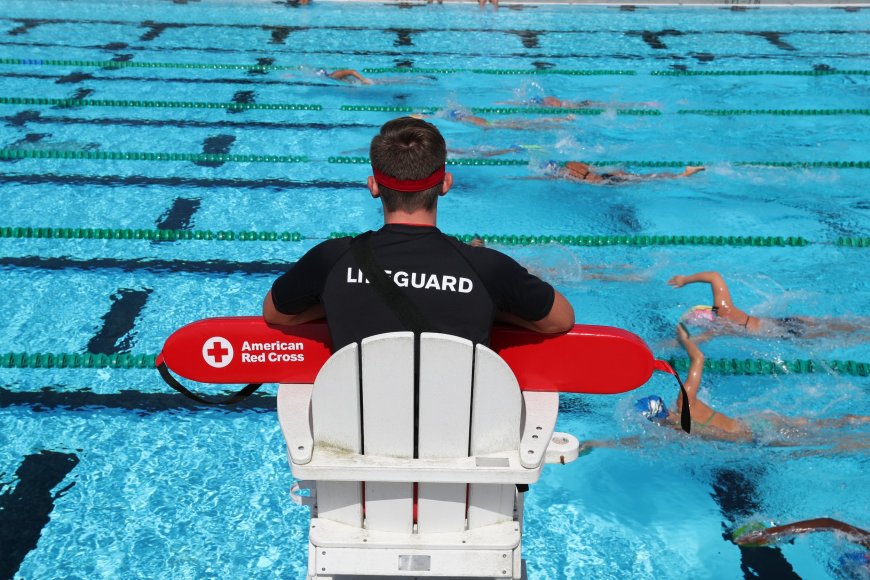The Official Guide to Lifeguard Certification

Becoming a certified lifeguard is a rewarding and important step for anyone interested in ensuring public safety at pools, beaches, and aquatic centers. Lifeguard certification equips individuals with essential lifesaving skills, CPR and first aid knowledge, and the confidence to act in emergencies. If youre considering this path, this official guide to lifeguard certification will walk you through everything you need to knowfrom eligibility requirements and course content to tips for passing and finding the right program.
What Is Lifeguard Certification?
Lifeguard certification is a formal process through which individuals are trained and evaluated to ensure they are capable of preventing, recognizing, and responding to aquatic emergencies. Most certification programs are offered by nationally recognized organizations like the American Lifeguard Association. Certification is typically valid for two years, after which recertification is required to maintain credentials.
Why Lifeguard Certification Matters
Lifeguards have a serious responsibility: they are tasked with saving lives. Pools, beaches, and water parks rely on certified lifeguards to ensure patrons' safety and respond rapidly in emergencies. Lifeguard certification not only improves your skills and knowledge but also enhances your employability in a competitive job market. Many recreational facilities and camps wont consider applicants who lack up-to-date certification.
Eligibility Requirements
While exact requirements vary by training provider, most lifeguard certification programs require:
-
Minimum Age: Usually 15 years old by the last day of the course.
-
Swimming Skills: Candidates must typically pass a pre-course swimming test. This may include:
-
A 300-yard continuous swim using front crawl and breaststroke.
-
Treading water for two minutes using only legs.
-
Timed retrieval of a 10-pound object from a depth of 7 to 10 feet.
-
These prerequisites ensure that candidates are physically capable of handling the demands of lifeguard duties.
What the Course Covers
Lifeguard certification courses provide comprehensive training in the following areas:
-
Water Rescue Skills: How to safely perform active and passive victim rescues, spinal injury management, and team approaches for multiple rescues.
-
Surveillance Techniques: How to recognize distress signals, scan effectively, and monitor large groups of swimmers.
-
CPR and AED Training: Lifeguards must be certified in CPR for the Professional Rescuer, which includes adult, child, and infant CPR, use of an AED, and responding to breathing and cardiac emergencies.
-
First Aid: Covers common aquatic injuries like cuts, sprains, fractures, and heat-related illnesses.
-
Emergency Action Plans: How to activate and implement emergency procedures quickly and efficiently.
The course format typically includes a combination of classroom instruction, hands-on practice, and written and physical assessments.
How Long Does Certification Take?
Most full lifeguard certification courses take between 20 to 30 hours to complete. These can be offered over a weekend, across several days, or in evening classes over a few weeks. Some providers also offer blended learning options, where part of the coursework is done online and the hands-on skills are practiced in-person.
Tips for Passing the Lifeguard Certification Course
Passing the course requires focus, practice, and preparation. Here are some helpful tips:
-
Brush Up on Swimming Skills: Practice endurance swimming, treading water, and object retrieval before the course begins.
-
Take Notes: During the classroom sections, take notes to help retain key concepts, especially CPR and first aid protocols.
-
Ask Questions: If youre unsure about a technique or concept, dont hesitate to ask your instructor for clarification.
-
Practice Rescue Drills: The more you rehearse water rescues and teamwork scenarios, the more confident youll be during evaluations.
-
Stay Calm Under Pressure: Lifeguard certification tests your ability to think and act quicklykeeping calm helps you pass practical exams and mirrors real-life situations.
Choosing the Right Certification Program
Not all lifeguard training programs are created equal. When choosing a program, consider the following:
-
Accreditation: Ensure the provider is nationally recognized and accepted by local employers.
-
Course Content: Confirm the course includes CPR, AED, and first aid training.
-
Location & Schedule: Look for classes that are convenient in both location and time.
-
Cost: Courses typically range from $150 to $300. Some employers may reimburse the cost or offer free training in exchange for work commitment.
-
Recertification Options: Check if the provider offers easy recertification when your credentials expire.
After Certification: Whats Next?
Once certified, youre eligible to apply for lifeguard positions at public pools, private swim clubs, beaches, resorts, water parks, and summer camps. Your certificate is a strong credential that demonstrates your ability to handle emergencies, communicate effectively, and maintain a safe environment.
To keep your certification active:
-
Stay in Practice: Continue practicing your rescue and CPR skills.
-
Attend Refresher Courses: Take optional refresher sessions or in-service training offered by employers.
-
Renew Before Expiration: Lifeguard certifications are usually valid for two years. Schedule your recertification before it lapses.
At the final end
Lifeguard certification is a valuable achievement that equips you with the skills to protect lives and respond to emergencies with confidence. Its more than just a job requirementits a commitment to safety, responsibility, and leadership. Whether youre pursuing a part-time job, a stepping stone to a future in public safety, or simply want to make a difference, becoming a certified lifeguard is an impactful and empowering decision.




































